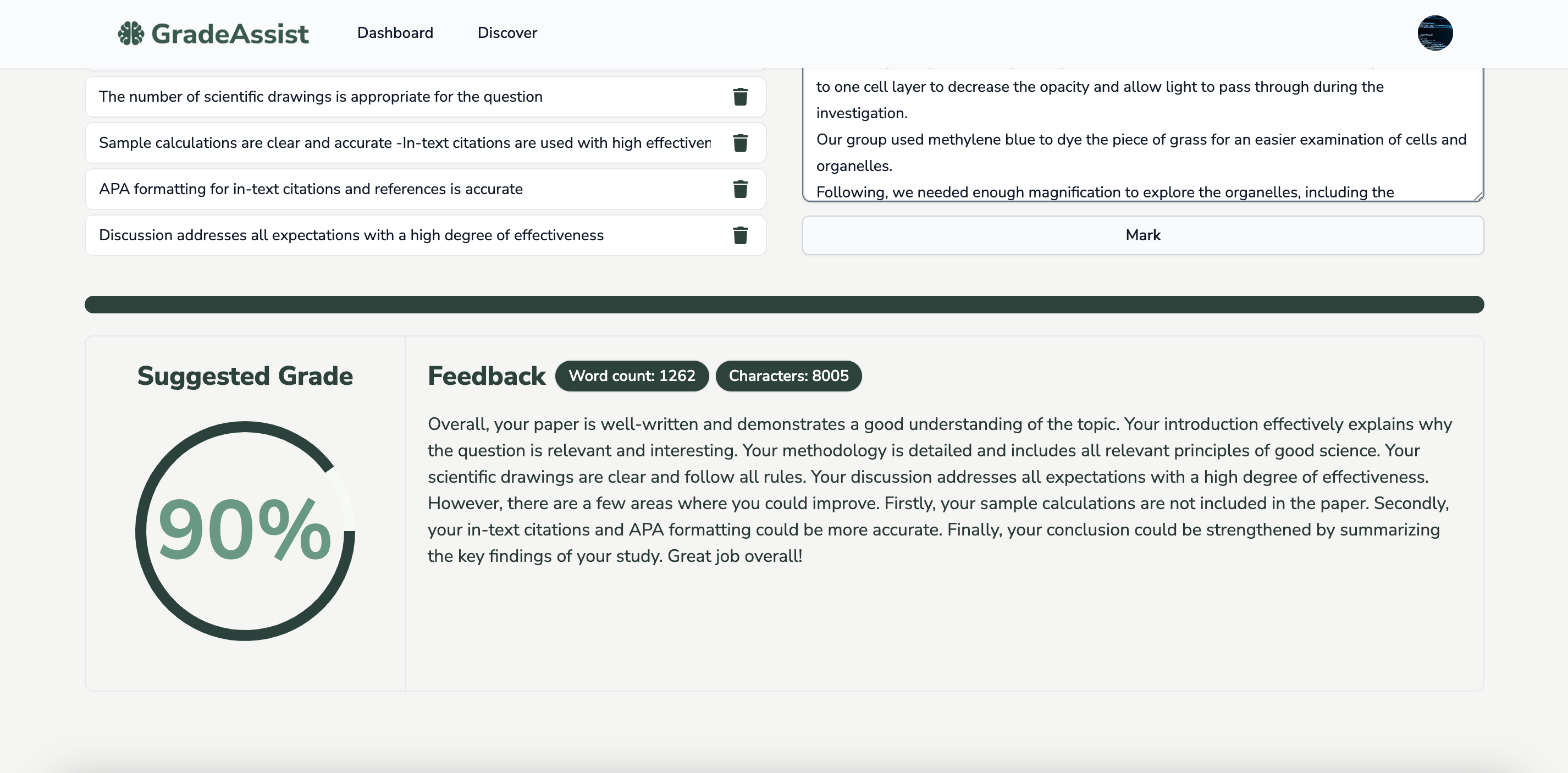Company
GradeAssist’s Vision: Teachers won't have to grade essays

How we’re building modern AI-powered tools to streamline the essay grading process for teachers.
Written assignments shouldn’t have to be graded by teachers.
…or at least they won’t have to be, in the near future.
It would be fair to say that grading assignments is a huge waste of time.
The grading process is grossly outdated, with teachers having to spend hours on end, meticulously reading 20–30 essays per class just to provide helpful insight on student work.
As a student, I’ve seen this problem play out in real-time.
During exam season in the winter of 2022, as usual, some of our exams included aspects of written responses, along with SCANTRON multiple choice questions.

That’s when it hit me — there’s an amazing tool that automates the process of grading multiple choice tests, so why isn’t there an equivalent for written responses and essays?
As a student, I often witnessed the struggles my teachers faced when grading stacks of written assignments. In fact, after one of my exams, I found that one of my teachers had to grade a whole stack of 30 essays in just 1 day since our exams had gotten pushed back, and final report cards were due soon.
That’s why I founded GradeAssist. We’re building tools to streamline the grading process — all while reducing bias and providing rich feedback to students.
Through leveraging generative AI and natural language processing, GradeAssist analyzes and assesses the submitted written content, based on the criteria and grade level provided by the teacher.

In just a few seconds, GradeAssist is able to provide a suggested grade for the submitted work, as well as rich and in-depth feedback about how the student could improve moving forward.
There are already so many AI-powered educational tools to help students, yet somehow there are few to no solutions or tools that enable teachers to harness its power. We aim to fill that gap, levelling the playing ground for everyone.
Streamlining the Grading Process
GradeAssist simplifies the grading process in three key ways:
-
Speedy Evaluation: GradeAssist harnesses the power of AI to rapidly scan and analyze written assignments. Instead of teachers laboring over every word, the software quickly identifies key elements, evaluates structure, and assesses content with remarkable precision.
-
Rich, Personalized Feedback: What makes GradeAssist stand out is its ability to provide personalized, constructive feedback based on the teacher’s criteria. It pinpoints areas for improvement, and ensures that students receive the support they need to enhance their skills.
-
Reducing Bias: One of GradeAssist’s most significant features is its capacity to minimize grading bias. By focusing solely on the content of assignments, it eliminates unintentional favoritism, offering a more objective evaluation. Not only that, but the platform allows sharing of assignment criteria, allowing teachers to share standardized assessments.

Impact on Teachers and Students
GradeAssist isn’t just a time-saver; it’s a game-changer for both teachers and students. For educators, it liberates them from the never-ending cycle of grading, giving them more time for lesson planning, student engagement, and professional development. With GradeAssist, teachers can provide students with more insightful, personalized feedback, promoting growth and success.
For students, the benefits are equally impressive. Faster grading and comprehensive feedback mean they can better understand their strengths and areas that need improvement, fostering self-improvement, confidence, and a deeper commitment to their education. The removal of grading bias ensures that every student receives a fair evaluation, regardless of their background or personal circumstances.
The Journey Ahead
GradeAssist embodies my vision for a brighter, more efficient future in education.
With GradeAssist’s acceptance into the Microsoft for Startups Founders Hub, I am excited to be a part of this transformative journey. We are taking a significant stride toward addressing the time-consuming grading challenge faced by teachers.
By harnessing the power of AI, we are reshaping education, liberating teachers from the grading treadmill, and empowering students with personalized feedback.
Together, we can level the educational playing field and pave the way for a future where grading is not an obstacle but a catalyst for learning.
Let’s embrace the potential of AI to revolutionize education, offering educators more time to inspire and engage, and students the support they deserve to thrive.
The path ahead is illuminated, and I’m nothing but optimistic for what’s to come.
I’m Daniel Martinez, a 16-year-old high school student with an obsession with technology and a drive to make a difference in the world of education.